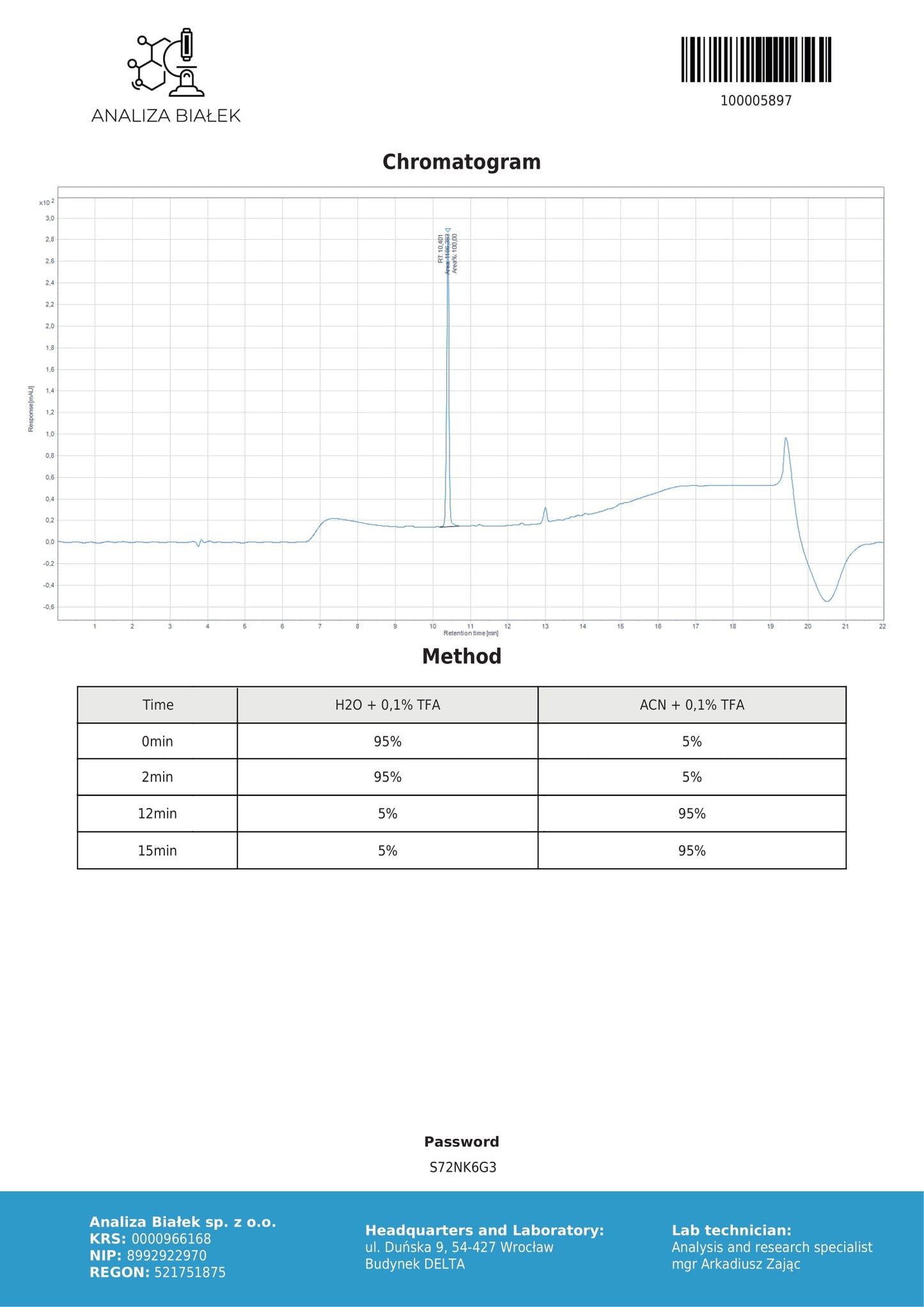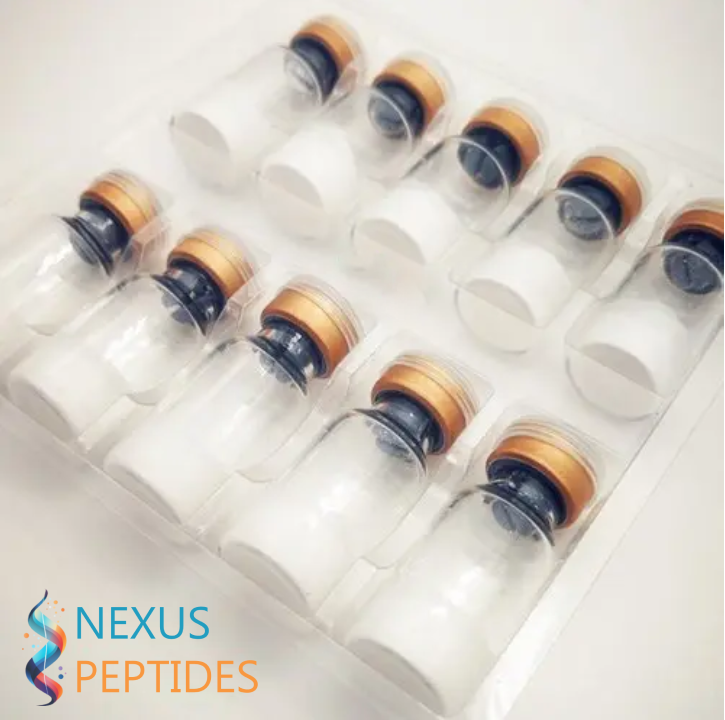



Product Description: Sermorelin
Introduction:
Sermorelin is a synthetic peptide analog of growth hormone-releasing hormone (GHRH), used primarily in scientific research to study its interactions with the body’s endocrine system. Its chemical structure allows it to stimulate the release of growth hormone from the pituitary gland, making it a valuable tool for exploring growth hormone regulation and its potential role in various biological processes. Sermorelin has gained attention for its potential to influence growth hormone levels and its use in laboratory research related to endocrinology, neurobiology, and cellular biology.
What is Sermorelin?
Sermorelin is a synthetic peptide composed of a short sequence of amino acids that mirrors part of the natural GHRH. This sequence, consisting of 29 amino acids, is responsible for stimulating the secretion of growth hormone (GH) from the pituitary gland. Unlike full-length GHRH, Sermorelin is designed to provide a more specific and controlled release of growth hormone. As a GHRH analog, Sermorelin is primarily used in research to study growth hormone dynamics and its potential effects on cellular and tissue function.
Potential Different Names:
- Sermorelin acetate
- GHRH 1-29
- Growth Hormone-Releasing Hormone analog
- GHRH analog
- GRH (Growth Hormone Releasing)
- Sermorelin peptide
Chemical Formula:
The chemical formula for Sermorelin is C149H246N44O42S. This formula represents the peptide's complex sequence of amino acids, with each atom contributing to the molecule’s overall structure and function. Sermorelin is synthesized through solid-phase peptide synthesis and is typically found in its acetate salt form for research purposes.
Structure:
Sermorelin consists of a chain of 29 amino acids, and its structure closely mimics the natural growth hormone-releasing hormone (GHRH) from the human body. The peptide’s sequence is designed to be biologically active in stimulating the pituitary gland, encouraging the release of growth hormone. Sermorelin is a relatively small peptide, with a molecular mass that facilitates its absorption and bioactivity in experimental conditions. The peptide's structure includes a combination of amino acids that allow it to bind to specific receptors in the pituitary gland and induce the release of growth hormone.
How Does It Work?
Sermorelin functions by binding to the growth hormone-releasing hormone receptors in the pituitary gland. This binding activates a signaling cascade that ultimately triggers the release of growth hormone (GH). Since Sermorelin is a truncated version of the natural GHRH, it retains the ability to stimulate growth hormone secretion but with more controlled effects than the full-length GHRH.
Sermorelin’s activity relies on its interaction with the hypothalamic-pituitary axis, the system responsible for regulating hormone release in the body. By stimulating the pituitary gland to release growth hormone, Sermorelin plays a role in maintaining homeostasis of growth hormone levels. Growth hormone is crucial in various physiological processes, including metabolism and cell growth, and the regulation of its secretion is essential for maintaining normal function across a range of biological systems.
Conclusion:
Sermorelin is a synthetic peptide that mimics the action of natural growth hormone-releasing hormone. It is primarily used in scientific research to explore the regulation of growth hormone and its role in physiological and metabolic processes. Sermorelin's structure and function make it an effective tool for researchers studying the hypothalamic-pituitary axis and growth hormone dynamics. Its use in laboratory settings can contribute to a greater understanding of the complex mechanisms behind growth hormone release and its potential implications in biological research.
Disclaimer:
This product description is intended for research purposes only and is not for human consumption. Sermorelin is a laboratory-grade peptide designed exclusively for use in controlled environments by qualified researchers. It should only be handled by trained professionals in accordance with safety guidelines and regulations. Sermorelin is not approved for medical use, and all research should be conducted in compliance with applicable laws and ethical standards.




